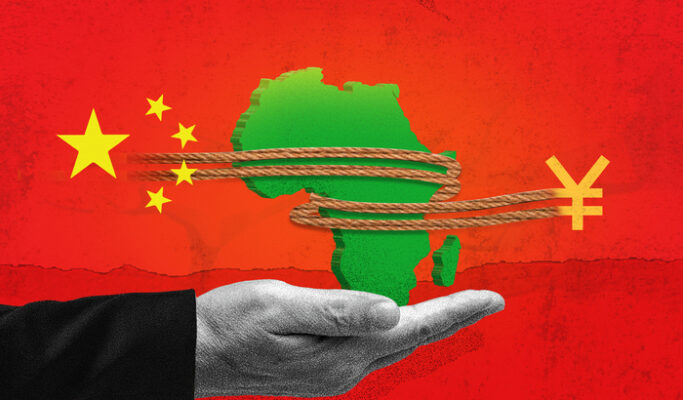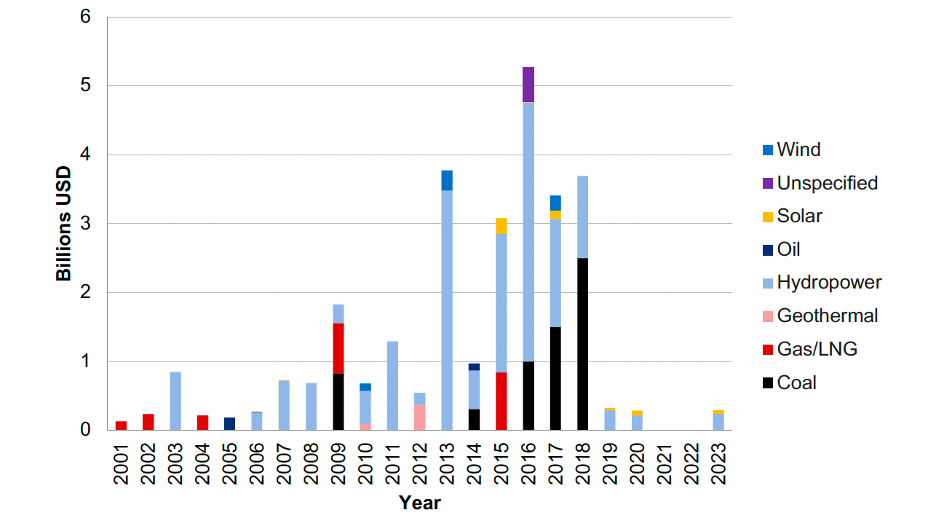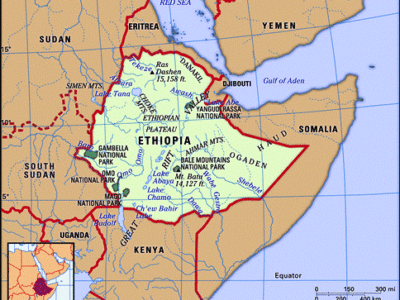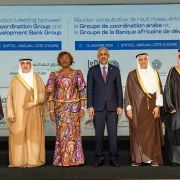A new update to the Chinese Loans to Africa (CLA) Database, managed by the Boston University Global Development Policy Center, estimates that from 2000-2023, Chinese lenders provided 1,306 loans amounting to $182.28 billion to 49 African governments and seven regional borrowers.
In 2023, Chinese lenders issued 13 new commitments with a value of $4.61 billion to eight countries and two regional financial institutions.
- This represents the first time the annual loan amount to Africa has risen since 2016 but is far below the early BRI years (2013-2018), in which cumulative commitments surpassed $10 billion annually.
The CLA Database is an interactive data project tracking loan commitments from Chinese development finance institutions (DFIs), commercial banks, government entities and companies to African governments, state-owned enterprises and regional multilateral institutions.
A new policy brief analyzes the state of Chinese lending to Africa ahead of the 2024 Summit of the Forum on China-Africa Cooperation, taking place in Beijing from September 4-6, 2024.
Main findings:
- Total loans: Between 2000-2023, Chinese lenders provided 1,306 loans worth a combined $182.28 billion to 49 African countries and seven regional borrowers. During this time, Chinese loans were channeled primarily to Africa’s energy sector ($62.72 billion), transportation ($52.65 billion), information and communication technology ($15.67 billion), and the financial sector ($11.98 billion).
- New loans: In 2023, Chinese lenders issued 13 new commitments with a value of $4.61 billion to eight African countries and two regional financial institutions. This represents the largest volume of lending since 2019, before the onset of the COVID-19 pandemic, but is far below the early BRI years (2013-2018), in which cumulative commitments surpassed $10 billion annually.
Figure 1: Chinese Loans to Africa, 2000-2023
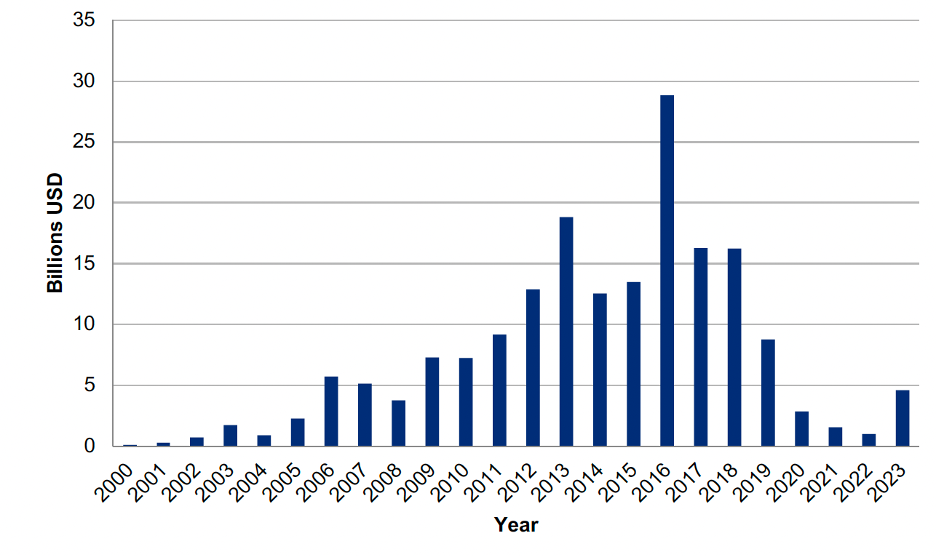
Source: Chinese Loans to Africa Database, Boston University Global Development Policy Center, 2024.
- Top five borrowers: China’s top five loan recipients between 2000-2023 were Angola, Ethiopia, Egypt, Nigeria and Kenya.
Figure 7: Top Five African Borrowers from China, 2000-2023
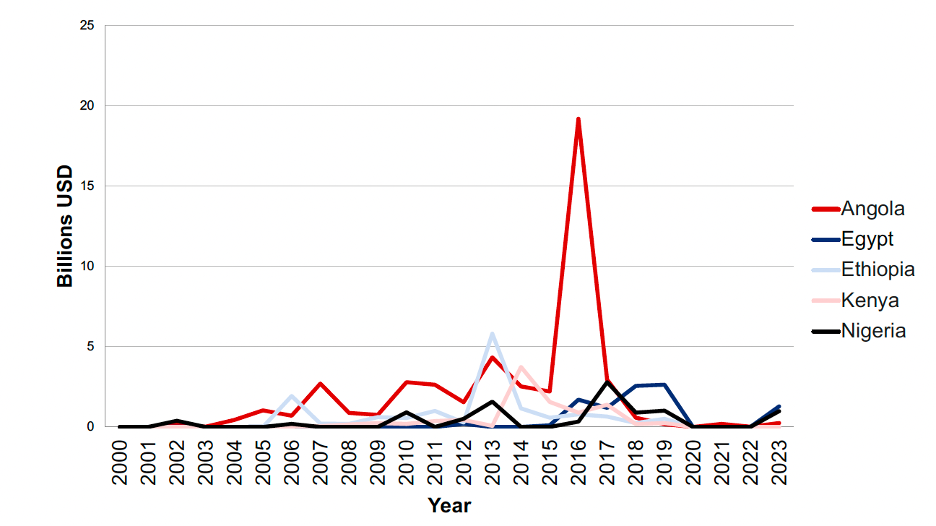
Source: Chinese Loans to Africa Database, Boston University Global Development Policy Center, 2024.
- Financing the financial sector: The volume of financing channeled to Africa’s financial sector in 2023 is unique when compared to previous years. More than half the total combined loan amount for 2023, $2.59 billion, was provided to African multilateral banks, as well as nationally owned banks in Egypt. From 2000- 2022, a mere 5.29 percent of Chinese loans to Africa were directed to the continent’s financial sector. Chinese lenders’ focus on African financial institutions most likely represents a risk mitigation strategy that avoids exposure to African countries’ debt challenges.
Figure 5: Financial Sector Lending Breakdown, 2000-2023
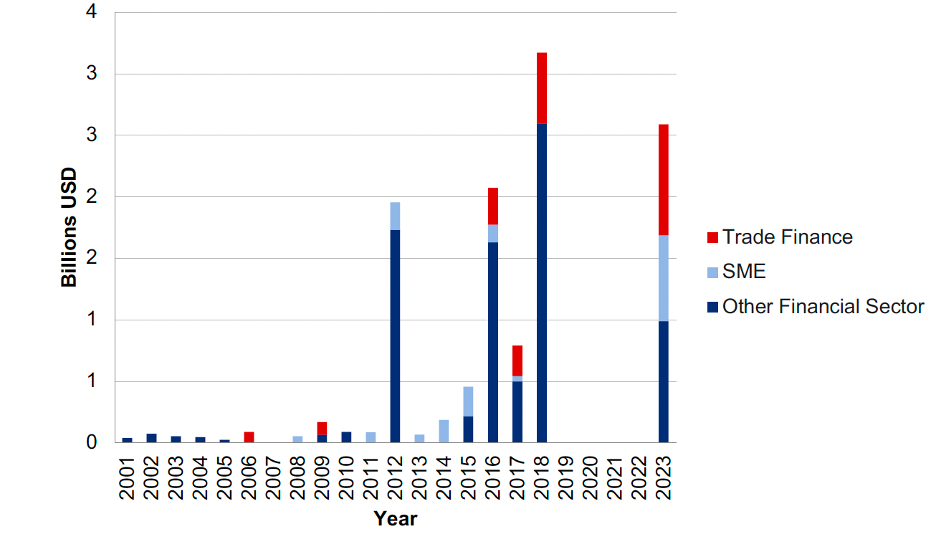
Source: Chinese Loans to Africa Database, Boston University Global Development Policy Center, 2024.

